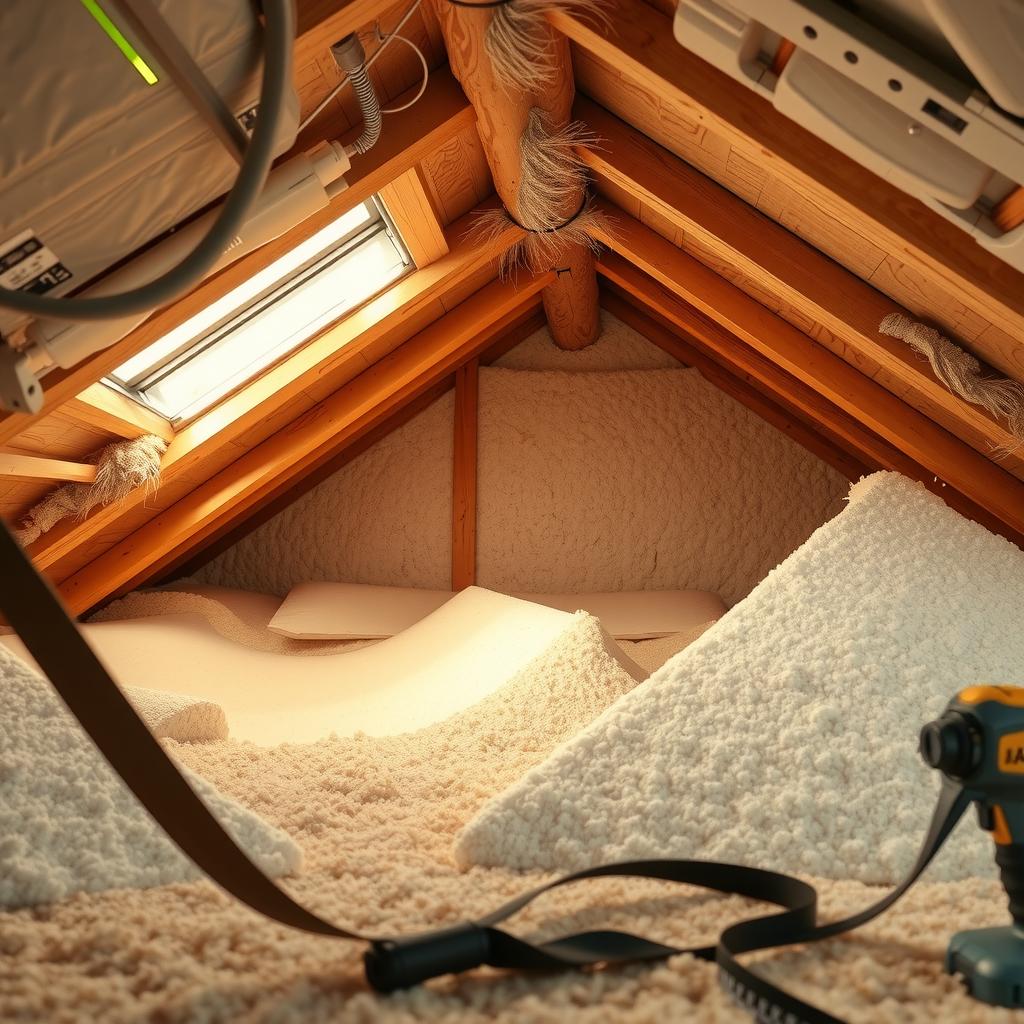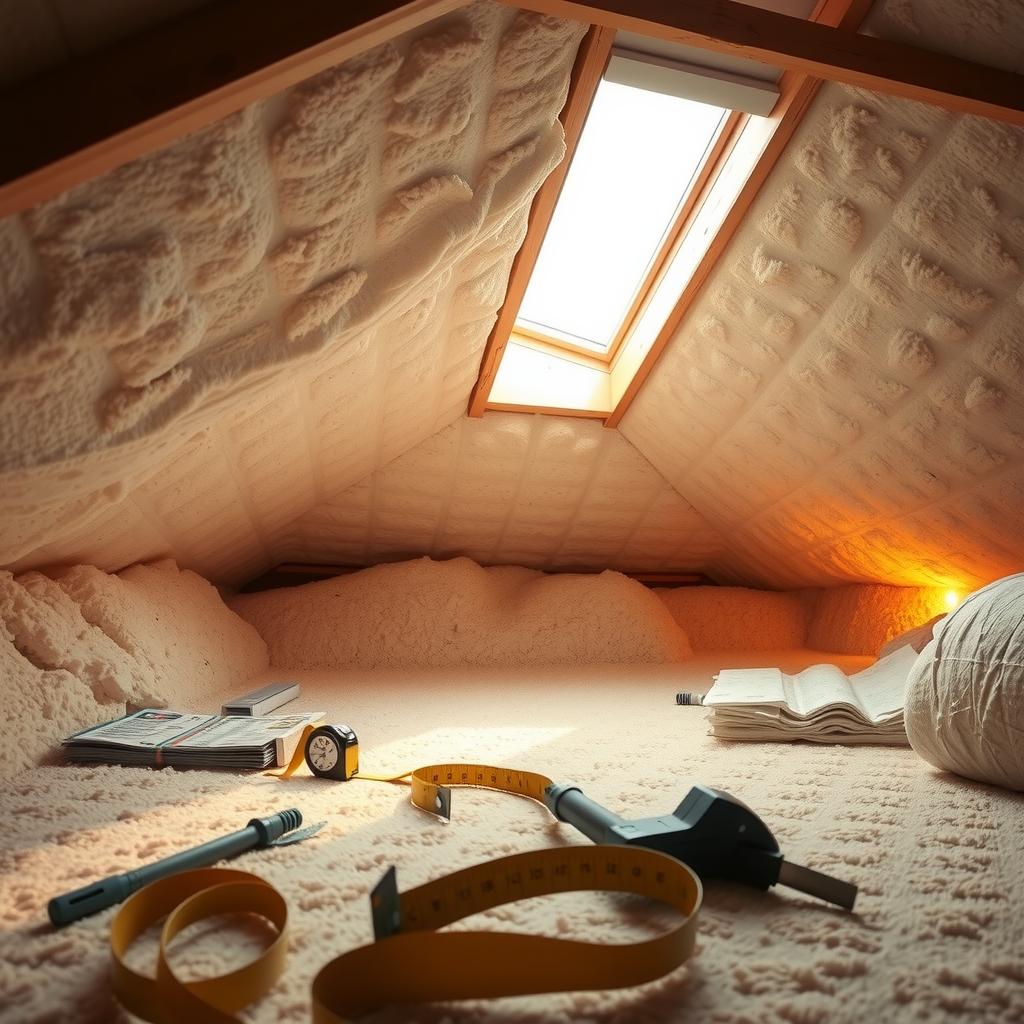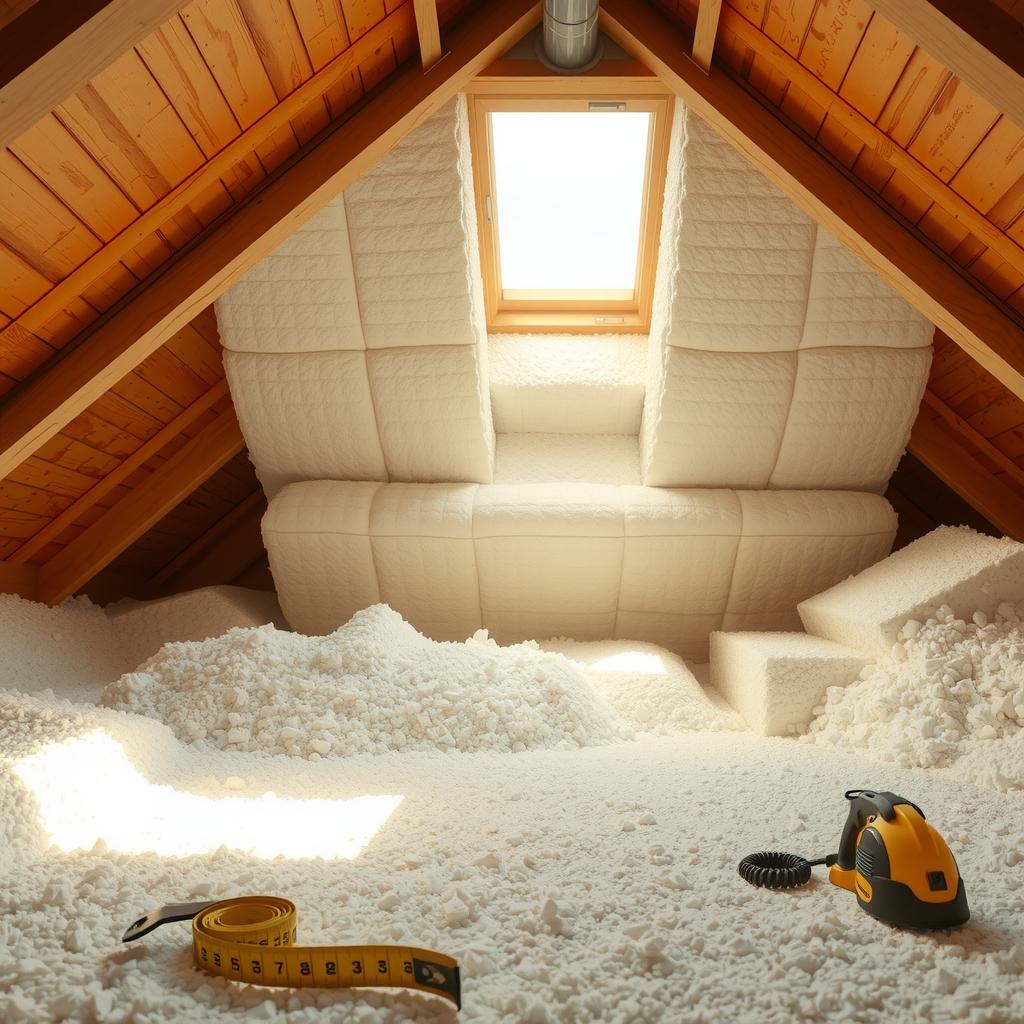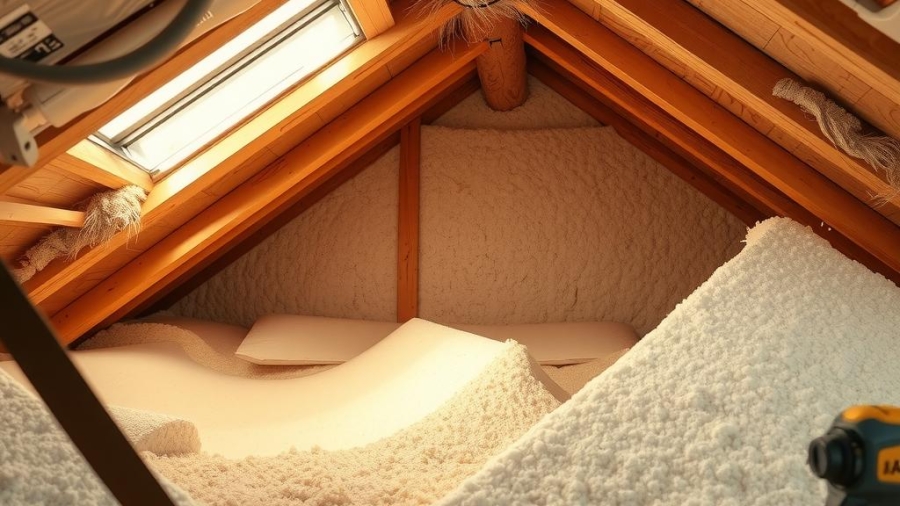When it comes to home renovation, few projects yield as significant a return on investment as attic insulation. Many homeowners unwittingly overlook their attics, leaving them susceptible to drafts and poor temperature control. As energy bills rise and climate concerns grow, the importance of choosing the best insulation materials for attic renovation becomes increasingly evident. In 2024, innovative solutions in insulation technology promise not only enhanced energy efficiency but also cost-effective options that can dramatically improve comfort levels throughout the home.
Homeowners face a common dilemma: how to select from an array of insulation options that vary widely in performance and price. Whether considering fiberglass batts, blown-in cellulose, or cutting-edge spray foam insulation, understanding each material’s benefits is crucial for making informed decisions. The right choice can lead to substantial savings on heating and cooling costs while simultaneously reducing environmental impact—a win-win scenario for any homeowner invested in sustainable living.
As this article delves into various types of attic insulation materials available today, readers will discover valuable insights into their unique properties and applications. From draft prevention techniques to practical tips on installation processes for different products such as reflective barriers or mineral wool batts, this guide aims to arm homeowners with knowledge essential for optimizing their spaces during renovations.
By exploring these top-tier choices among modern insulation technologies—along with expert recommendations—homeowners will be better prepared not just to renovate but also enhance their homes’ overall efficiency and livability year-round. With rising temperatures becoming more prevalent alongside fluctuating weather patterns globally, now is an opportune time to reevaluate your attic’s potential through strategic renovations tailored towards achieving maximum thermal performance while minimizing long-term costs.
Join us as we uncover the best practices in selecting effective insulating materials that align with both budgetary considerations and comfort needs— paving the way toward smarter home improvement investments in 2024!

Key Insights: Top Insulation Materials for Your Attic Renovation
When undertaking an attic renovation, selecting the right insulation options is crucial for achieving optimal energy efficiency. Homeowners often face challenges with temperature regulation and energy costs, making it essential to choose materials that effectively combat these issues. Among the various choices available in 2024, some of the best materials include blown-in cellulose insulation, fiberglass batts, and spray foam insulation. Each option offers unique benefits that can significantly enhance comfort while also providing excellent thermal resistance.
Blown-in cellulose insulation is a popular choice due to its eco-friendly properties and ability to fill gaps effectively. This material not only improves temperature control but also acts as a sound barrier, which can be particularly beneficial in multi-story homes where noise reduction is desired. Additionally, blown-in cellulose is often considered a cost-effective solution since it can be installed without professional help if homeowners are comfortable with DIY projects.
Another highly regarded option is fiberglass batt insulation. Known for its affordability and ease of installation, fiberglass batts come pre-cut into standard sizes that fit snugly between joists or studs in the attic space. This type of insulation provides reliable draft prevention while maintaining warmth during winter months and keeping spaces cooler during summer heat waves—a vital factor for anyone focused on home improvement.
For those seeking superior performance in challenging climates or specific design needs, spray foam insulation stands out as one of the most effective solutions available today. While this option may require professional installation due to its complexity, it offers unmatched air sealing capabilities alongside exceptional thermal resistance—ensuring both comfort year-round and reduced energy bills over time.
By understanding these top insulation materials, homeowners can make informed decisions tailored to their specific attic renovation goals. Whether prioritizing environmental impact with cellulose or opting for high-performance spray foam solutions, each selection contributes significantly towards creating a cozy living space while improving overall property value through enhanced energy efficiency.

Understanding the Importance of Insulation
Enhancing Energy Efficiency and Comfort through Attic Renovation
Proper insulation is a critical component in achieving a comfortable and energy-efficient home, particularly when it comes to attic renovation. The attic often serves as a barrier between the living space and external elements, making its insulation paramount for maintaining temperature control. By implementing attic insulation, homeowners can significantly reduce heat loss during winter months while keeping their homes cool in summer. This dual functionality not only enhances comfort but also reduces reliance on heating and cooling systems, leading to marked improvements in overall energy efficiency.
When discussing the best materials for attic insulation, several options come to mind. Fiberglass batts are commonly used due to their cost-effectiveness and ease of installation; however, spray foam has gained popularity for its superior air-sealing abilities. These modern solutions provide effective draft prevention, creating an airtight environment that minimizes energy waste. Homeowners should consider factors such as R-value—an indicator of thermal resistance—when selecting from various insulation options. A higher R-value typically correlates with better performance against temperature fluctuations.
In addition to improved energy efficiency, well-executed attic renovations can lead to increased property value. Potential buyers often seek homes that promise lower utility bills—a direct result of proper insulation—and this factor can set properties apart in competitive real estate markets. Therefore, investing time into understanding different types of insulating materials could yield considerable returns on investment (ROI) during resale.
To maximize benefits from any renovation project focused on attics, homeowners should be aware of certain tips regarding installation practices: ensuring adequate ventilation is crucial for maintaining indoor air quality; this prevents moisture buildup which could lead to mold growth or structural damage over time. Furthermore, professionals recommend inspecting existing insulation before adding new layers—this ensures optimal effectiveness without unnecessary expense.
In summary, prioritizing attic renovation with attention paid towards suitable insulation options can dramatically enhance both comfort levels within the home and improve long-term financial prospects through reduced energy costs and increased market appeal. Home improvement does not merely focus on aesthetic upgrades but encompasses practical enhancements that contribute substantially towards sustainable living practices.

Understanding Insulation Choices for Attics
Comparing Traditional Batt Insulation and Modern Spray Foam Techniques
When considering attic insulation, homeowners are often faced with the decision between traditional batt insulation and advanced spray foam techniques. Traditional batt insulation, typically made from fiberglass or mineral wool, is well-known for its affordability and ease of installation. It comes in pre-cut panels that fit snugly between framing members, providing a level of thermal resistance that can significantly enhance energy efficiency within a home. However, one limitation of batt insulation is its susceptibility to gaps and compression during installation, which can compromise its effectiveness in terms of temperature control and draft prevention.
In contrast, modern spray foam insulation offers a more comprehensive solution. This material expands upon application to fill every nook and cranny in the attic space, creating an airtight seal that not only improves insulating properties but also acts as a barrier against moisture infiltration. Spray foam boasts higher R-values per inch compared to traditional options—an important factor when evaluating the best materials for improved energy performance in homes undergoing renovation or upgrades. Moreover, this type of insulation contributes to long-term cost-effective solutions by reducing heating and cooling costs due to its superior air sealing capabilities.
Despite these advantages, there are considerations regarding cost; spray foam tends to be pricier than traditional batt materials upfront. Thus, homeowners must weigh initial investment against potential savings on utility bills over time when choosing their preferred method of insulation options. Additionally, while installing either type involves some degree of labor intensity—particularly with spray foam requiring professional application—the benefits derived from proper installation cannot be overstated.
Ultimately, understanding the characteristics and performance outcomes associated with both types will aid homeowners in making informed decisions tailored to their specific needs related to attic renovations or improvements aimed at enhancing energy efficiency throughout their living spaces. Recognizing how each option impacts overall comfort levels within the home while ensuring optimal functionality highlights why careful consideration is crucial when selecting suitable materials for effective attic isolation strategies.
Cost-Effective Solutions for Attic Insulation
Smart Approaches to Enhance Home Energy Efficiency
In the realm of home improvement, attic insulation stands out as a pivotal factor in ensuring energy efficiency while simultaneously managing renovation costs. Homeowners seeking to optimize their living spaces without incurring excessive expenses can explore several innovative strategies that prioritize both effectiveness and affordability. One practical approach involves assessing existing insulation materials—many properties may already have some level of insulation that simply needs enhancement or repair. By conducting a thorough inspection, homeowners can identify areas where draft prevention is necessary, allowing them to target specific spots rather than overhauling the entire space.
Another cost-effective strategy includes utilizing environmentally friendly options such as cellulose or fiberglass batts, which are often more affordable and provide excellent thermal resistance. These materials not only contribute significantly to temperature control but also align with sustainable building practices. Additionally, incorporating radiant barriers in warmer climates can drastically reduce heat transfer into the attic space during summer months, leading to decreased reliance on air conditioning systems. This method exemplifies how choosing the right insulation options can directly impact long-term energy savings.
Furthermore, engaging in DIY projects for attic insulation installation can lead to substantial cost reductions when compared with hiring professionals. Many resources provide step-by-step guides on how homeowners can effectively apply new layers of insulation themselves—this not only empowers individuals but also fosters a deeper understanding of their home’s needs regarding thermal performance and overall comfort levels.
Moreover, sealing gaps around vents and ducts should not be overlooked; it’s an essential aspect of maintaining energy efficiency within any insulated attic space. Small investments made towards caulking or weather stripping these openings prevent warm air from escaping during colder months or cool air from seeping out when temperatures rise—all contributing factors that influence heating and cooling costs throughout the year.
By adopting these straightforward yet impactful renovation tips focused on enhancing energy efficiency, homeowners will find themselves maximizing value without breaking the bank in what could otherwise be overwhelming remodeling endeavors aimed at improving their attics’ functionality and comfort levels year-round.
Innovative Methods for Affordable Attic Insulation
Achieving Maximum Value Through Strategic Choices
When considering ways to insulate an attic efficiently while keeping expenditures low, strategic planning plays a crucial role. For instance, exploring local government incentives for energy-efficient improvements could further alleviate financial burdens associated with upgrading one’s home’s insulating capabilities. Such programs might offer rebates for installing high-performance products like foam board or spray foam applications—the latter being particularly effective due to its ability to fill irregular spaces seamlessly.
Additionally, reusing old materials creatively presents another option worthy of consideration; reclaimed wood shavings combined with other natural fibers serve as viable alternatives that maintain insulating properties while minimizing costs associated with purchasing brand-new supplies outrightly designed solely for this purpose.
Educating oneself about various product characteristics becomes paramount too—understanding R-value ratings helps determine which solutions yield superior results based on climate conditions prevalent in one’s area ensures optimal decisions are made concerning material selection tailored specifically toward unique environmental challenges faced daily by residents everywhere striving toward improved home environments through calculated enhancements focusing primarily upon establishing durable yet economically feasible installations complementing their respective property profiles adequately over time effortlessly blending style function practicality affordability seamlessly together harmoniously achieving ultimate satisfaction achieved inside every household experiencing delightful outcomes derived henceforth thereafter consequently benefiting all occupants alike mutually uniformly collectively across diverse demographics represented aptly herein undoubtedly proving beneficial immensely moving forward continuously thriving evolving progressively adapting innovatively successfully realizing aspirations envisioned originally initially proposed fundamentally grounded firmly rooted deeply entrenched within established norms exceeding expectations ultimately culminating triumphantly gratifyingly rewarding abundantly enriching lives immeasurably positively uplifting spirits invariably inspiring hope dreams aspirations continually flourishing unceasingly endlessly everlastingly perpetually advancing evolve dynamically revitalizing rejuvenating invigorating refreshing ideas aspirations ambitions tirelessly nurturing cultivating growth prosperity fulfillment happiness everlasting eternal bliss joyously celebrated fondly cherished warmly embraced eternally treasured forevermore timeless memories created lasting impressions etched indelibly hearts minds souls reflections poignant moments shared together forever bonded inseparably connected profoundly transforming existence exponentially elevating collective consciousness awakening realization universal interconnectedness transcending boundaries limitations embracing possibilities infinite horizon beckoning adventure awaits boundless exploration discovery adventures unfolding wondrous journeys embarking boldly forth steadfast courage unwavering resolve illuminating pathways previously obscured revealing truths essence profound wisdom guiding footsteps onward upward outward expansive realms awaiting exploration limitless potential unfolds before eyes beholding beauty magnificence world surrounding opening doors opportunities inviting embrace welcome change transformation embrace wholeheartedly welcoming evolution embracing journey life beautifully unfolding tapestry woven intricately intertwined threads experiences shaping destiny crafting narrative uniquely yours creating masterpiece artistry individual expression distinct honoring legacy carrying forward torch lighting way generations future bright shining beacon hope love unity harmony peace enlightenment illumination unfaltering radiance brilliance illuminating darkness dispelling shadows casting light dawns new era brighter tomorrow filled promise possibility endless horizons begging inquiry curiosity fueling passions igniting flames creativity sparking inspiration empowering action unlocking latent strengths harnessed unleashed revolutionizing paradigms breaking chains confinement liberating spirit soaring heights unprecedented exhilarating freedom liberation newfound awareness expanding perception limitless expansiveness enveloping universe boundlessly intertwining connectively harmon
Frequently Asked Questions:
Q: What are the best insulation materials for attic renovations in 2024?
A: When considering attic insulation options for renovation in 2024, several materials stand out. Fiberglass batt insulation remains popular due to its cost-effectiveness and ease of installation. For those seeking superior thermal resistance, spray foam insulation provides an excellent seal against drafts while also improving energy efficiency. Cellulose is another eco-friendly option that offers good thermal performance and soundproofing benefits. Each material has unique advantages tailored to different needs, making it essential for homeowners to assess their specific requirements before making a decision.
Q: How do I choose the right type of insulation based on my climate?
A: Selecting the appropriate insulation options largely depends on the local climate conditions. In colder regions, it’s crucial to prioritize materials with high R-values, such as closed-cell spray foam or rigid foam boards, which effectively resist heat transfer during winter months. Conversely, homeowners in warmer climates may benefit from reflective foil or radiant barrier installations that help maintain cooler temperatures in attics during peak summer heat. Understanding how each material responds to temperature fluctuations can significantly enhance overall comfort and energy savings.
Q: Are there any cost-effective solutions for insulating my attic without sacrificing quality?
A: Yes, there are various cost-effective solutions available for attic renovation projects aimed at enhancing comfort and reducing energy costs without compromising quality. DIY-friendly options like fiberglass batts or rolls provide a budget-conscious approach while still delivering decent thermal performance when installed correctly. Additionally, blown-in cellulose offers an affordable way to fill gaps and hard-to-reach areas effectively; however, professional installation may be advisable for optimal results. Homeowners should weigh initial costs against long-term savings on energy bills when selecting their preferred materials.
